
Gravity control

Introduction
Periodic table replaced
The concept of space recreated
The keys of the Master
The second key of the Master
Gravity control is exercised naturally by a planet. But can we replicate this control, change the nature to arrive to create technology creating an environment in the space similar to a planet? Or could we get to use technology reducing the severity of a common floor or plate to handle materials in weightlessness for example? This could be possible. This study will develop a realistic approach to how to control gravity.
This is how it is possible ... First, if we take the periodic table, we see that hydrogen weighs 1.00794 and an atom of gold weighs 196.966569. This means that gold weighs 200 times more than hydrogen, but it is 200 times bigger? That's a good question. How big are atoms?
We will assume that the atoms are similarly the same size ... this is explained by the fact that if we compare the stars, animals, insects, bacteria, dinosaurs ... well, they have something in common, their size. Nature is in balance for each type of being, and so are the atoms, they are of similar size from each other.
If the atoms are of the same size, there is something that makes them heavier. So what we're going to work in this document, which makes developing heavier atom and achieving change this property using a new technology, a controller of gravity.
 |
Back to the top of the page |
By studying atoms (material) listed on the periodic table, we arrive at conclusions on the foundations of physics. Firstly, the first aspect to consider is that the atoms themselves do not create the gravitational field by their weight. Having said that the force of gravity applies to all atoms, even hydrogen has a weight of 1.00794, so the weight is not zero. Because the weight of hydrogen is not zero, gravity is not the result of heavier to lighter which is placed in order of weight.
To properly investigate the material and gravity, we need a beginning, a zero point. Hydrogen is not the zero point; we cannot consider it as the beginning.
The second aspect to consider is that the periodic table has broken cycles, so there is no cyclical component. As nature is full of rule (cycle), it becomes important to use rules instead of using the weight of the atoms.
The third aspect to consider is that the periodic table indicates the amounts, such as the number of valence shell, the number of electrons per layer, etc.. These are quantitative methods that repeat element and therefore it is the main weakness since it cannot explain the difference of the atoms with the periodic table, the number of elements does not justify a change.
The fourth aspect is the increase in the weight of each element of the periodic table is not constant, there are variations, suggesting that the periodic table is not ideal to illustrate the material.
The concept of space recreated is not used in physics. The space recreated is explained in the document "The keys of physics" by the same author. We could explain variations increase the weight of atoms by integrating the concept of space recreated. This will transform the periodic table that we'll call the "keys of the master".
Theoretically, the concept of space recreated revealed that the same space, if it is accessed by another direction, this space is recreated to form a space which is not the same as the space of another direction. This concept explains how space is created.
Because the atoms have several properties (including weight) different from one atom to another, the concept of space is recreated to explain how atoms are different.
The first property of the atom is that it is round. With the concept of space recreated, we can explain the spherical shape. If space is recreated in all directions, we obtain a primary form of this space is to say that the atom is a space recreated in all directions. Basically, we only use the space because in reality the space contains a universe of property. The space has often been considered an empty inert for anything other than to create a distance to an object, but we underestimate the space.
Because space can recreate it is therefore a way to change the current properties of the space to give birth to the atom. As explained, if space is recreated so we can assemble the space. Indeed, when the space is recreated, in fact, another space is integrating space recreated. This creates combinations of space.
In Figure 1, we simulate what would be the beginning of infinity absorbed by a space. But of course, infinity is never absorbed because of the finite: the theory of evolution II, using the concept of the rule of union, the infinite and the finite pass from one to the other limiting increases to infinity but increasing the finite. But we will not elaborate on this rule, it does indicate that we the amount of space taken up will be limited.
Like the atom, the space contained after the atmosphere must be considered material. Obviously this is due to the fact that material is created from space, and the space contained after the atmosphere is lighter than hydrogen, see it weighs nothing. In a vacuum container created inside the atmosphere is what we call the ether because it tends to disintegrate, while the space after atmosphere has no this trend of disintegration, which is a big difference to consider in the study of space recreated.
As mentioned above, the keys of the master are replacing the periodic table. To do this, we have a new theory on the creation of the atom as the atom which comes from emptiness.
To develop the keys of the Master, we consider that space is a property. In fact, space is a primary element. There are other primary elements, and these properties become like space elements are recreated.
The weight of the atom is not a property because it changes depending on the global environment. So the key Master does not use weight as a ranking.
The first key of the Master is the possibilities of spreading elements of the periodic table that are only natural, not synthetic or atoms decays of other elements. There are 84 natural atoms. We will use the concept of attraction optimal opportunities to develop 84. It takes 6 x 14 to get to 84, but we will keep only the factor approach 6. In the concept of attraction optimal is an research study developed by the same author, however, there are elements subject to change after a revaluation. But we take the idea of attraction in its optimal form used to form atoms indestructible.
Figure 2 below shows the new concept of optimal attraction having taken care to incorporate the concept of space recreated.
Cells are what made the atom, are primary element like space. Figure 2 shows a form of attraction optimal leaving a space in the center. 6 cells are responsible for leaving a space in the center, but it is not everything. Recreated space will ensure that the 6 cells are absorbed in this space. Thus, we do not define the space just like a cell, the space can recreate alone, while other types of cells need space to recreate. The center space becomes occupied by six globules, is what form an atom. When the atom is formed, it is eternal.
We will now define how the behavior of six cells gathered around a space creating 84 possibilities forming the 84 elements of the periodic table. Cells are divided into 4 groups, and form two types of pairs.
As shown in Figure 3 below, the two types of pairs are 36 possibilities each. And the trick is to understand that the recreated space to absorb up to 6 times groups cell and a minimum of one cell by group forming these pairs.
Figure 3 shows a way to create possibilities for 72 atoms, however, there would be the possibility that the last 12 kinds of atoms (for a total of 84) are composed of a single group, the two dominant groups or group 1 and group 3. One group dominant form six possibilities, with two dominant groups, we have 12 possibilities (2 x 6 = 12). Dominant groups are also there to show that nature creates inequality as explained with the rule of union (and science of union) presented in another document. This theme of inequality is also what helps explain the weight increases variable for each element of the periodic table. Therefore naturally preserve inequality in the construction of the atom.
You will notice that the second example in Figure 3 shows only 5 total cells with 2 groups. This is also to show that the space mingles with the construction of the atom, and thus making it possible to build variable weights for each atom. And recreated space can also absorb another space. Thus, an atom consists of 6 cells with only space becomes a space that is as material. This is actually the space that is after the Earth's atmosphere. And as the atom, the space is eternal.
Space atom is not as dense as the gas is lighter than the gas, and in doing so, it appears like no object with inertia touched nothing since no weight. Thus, it is not void, nothingness, absolute outside of atmosphere even if the objects of any obstruction.
We could verify this by producing a vacuum container with the contained space outside the atmosphere. We could see then that it is not even empty a container manufactured in the planetary atmosphere.
We must also understand that space recreated is not only assembling the cells composing the atom, the space recreated also creates the planetary gravitational field. The concept of space recreated applies also to explain the nature attraction is continuous.
Thus the study of space recreated leads us to define how the magnets (poles of attraction) are formed and this is the second key of the Master.
The poles are elements that repel or attract. Thus, the atom is composed of a plurality of poles which enable it to have a permanent structure that is not really changed.
The absorption of a cell of one of four groups (the fifth group is the cell space does not form pole) by the space recreated reaction that causes the cell is externalized in this space recreated. Given that the atom consists of two groups, then the two groups are outsourcing and form the positive pole and the negative pole. However, this is not a constant. For example, a recreated space can absorb two groups of cells in a single space recreated. We therefore have a neutral pole, while the other 5 spaces can also be neutral poles or poles positive or negative depending on the cell it.
Thus the definition of the atom on the number of cells contained in each group, and also the same type of each atom may vary due to the positioning of the globules which are randomly in one of the spaces of the 6 spaces recreated. This forms a variation of atoms of the same type and is a variation of the weight is changed according to the number of poles positive, negative and neutral.
The change in weight of each atom of the same type creates an average which is not continuous and which is similar to the graph in Figure 4 (below), similar also to the variation of increases of the weight of the elements of the periodic table.
the periodic table
atom
 |
Back to the top of the page |



















